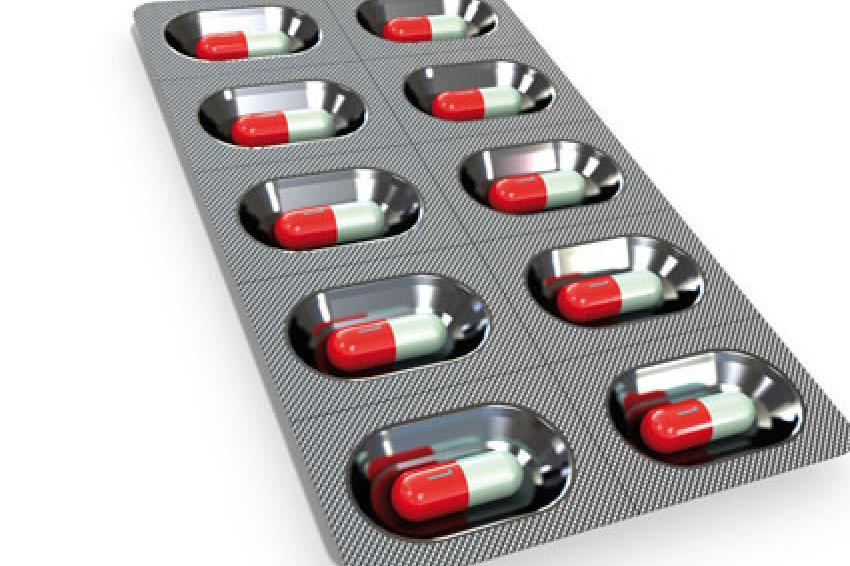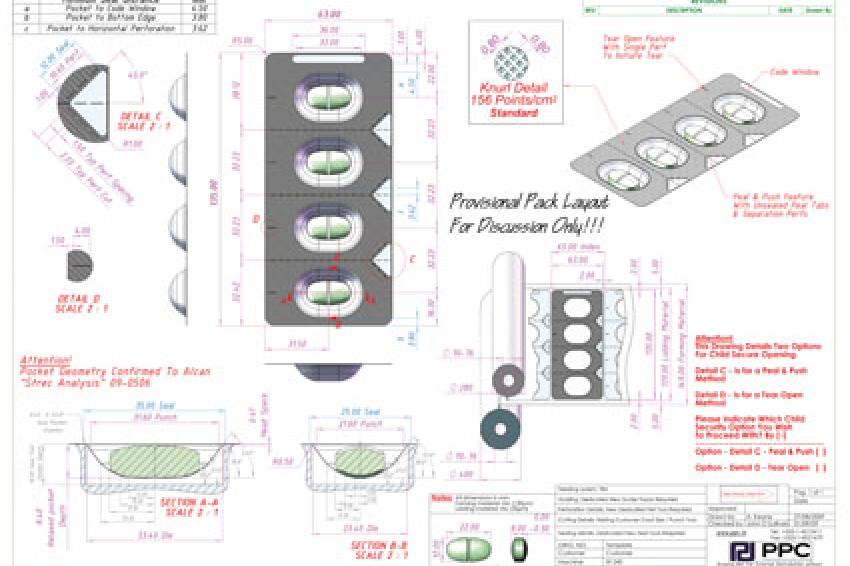New Dimensions
Modern 3D Designs for Blister Packaging
The seemingly humble blister pack is the standard unit of primary pharmaceutical packaging in both Europe and most of the world. It is the critical means of ensuring the pharma dosage is protected against all potential degradents and is presented to the patient in the correct manner in compliance with their medication regime. It is, in fact, a sophisticated drug delivery system in its own right and has a number of critical functions to fulfil. Yet, even today the conventional standard in the blister packaging industry for the presentation of blister designs and drawings is a two-dimensional black and white format.
A number of years ago Prodieco Pharmaceutical Components (PPC) challenged this standard by becoming the first company to introduce three-dimensional drawings and computer modelling to our customers to allow for greater detail and information to be conveyed to produce more consistent and sophisticated packs and to open up the design process to other often excluded key stakeholders in the package design process.
PPC chose the SolidWorks design system to bring the blister pack design into the 3D world, a standard design platform in many high tech and engineering based industries, yet almost unused in blister design.
The company initially used just one seat of this software for more complex pack designs but rapidly found that the advantages were just as strong for the conventional designs. Now all packs in PPC -irrespective of the product, company, machine and perceived level of complexity -are designed on a 3D platform as standard.
The company has followed up this change to a 3D format to its logical conclusion; now the blister tool design, machine programming and final tool verification are all carried out in full 3D as well, thus allowing for a closed loop, full 3D process.
PPC recently carried out an in-depth global voice of customer exercise to find out how the 3D blister designs were being received. Here is some of the feedback:
- "We get an immediate understanding of how the finalized blister will look and more importantly how it will function."
- "Less technical or even non-technical people are now able to input as appropriate to the design process. Marketing and supply chain often previously only inputted after the first blister was actually produced on the blister machine, which of course is too late."
- "It speeds up communication both internally and between us and the tool manufacturer."
- "We especially like the 3D animations of the packs, which allow us to explore functionally that was impossible before: child resistance, senior friendly, perforations, scoring, etc."
- "Getting fully validated pocket geometry in 3D with our tooling is a huge help with our internal validation and verification procedures."
Rapid Prototyping
3D design was the first step in allowing the company to communicate with its clients in a 3D way. The next step was the introduction of a rapid prototyping service to allow PPC to further enhance the blister design for its customers. These prototype blisters have been a huge success ever since the very first meeting with a pharma company, where we actually brought rapid prototypes of their finished pack to the design discussion.
PPC now boasts its own rapid prototype machine in-house. Rapid prototyping can be defined as a group of techniques used to rapidly fabricate a scale model of a part or assembly using three dimensional computer aided design data. The company can now generate a rapid and fully colored prototype of a customer's finalized blister design using the 3D blister pack design. The use of rapid prototypes in the pack design process reduces the development time taken to get a new or modified pack to market; it also allows for multiple stakeholders to input. The list of advantages here is long: better overall design; optimized package functionality; increased operational efficiency; and increased product sales potential.
Contact
Prodieco Pharmaceutical Components
Unit 30, Cookstown Ind. 0 Est.
Tallaght, Dublin 24
Ireland
+353 87 2401493






